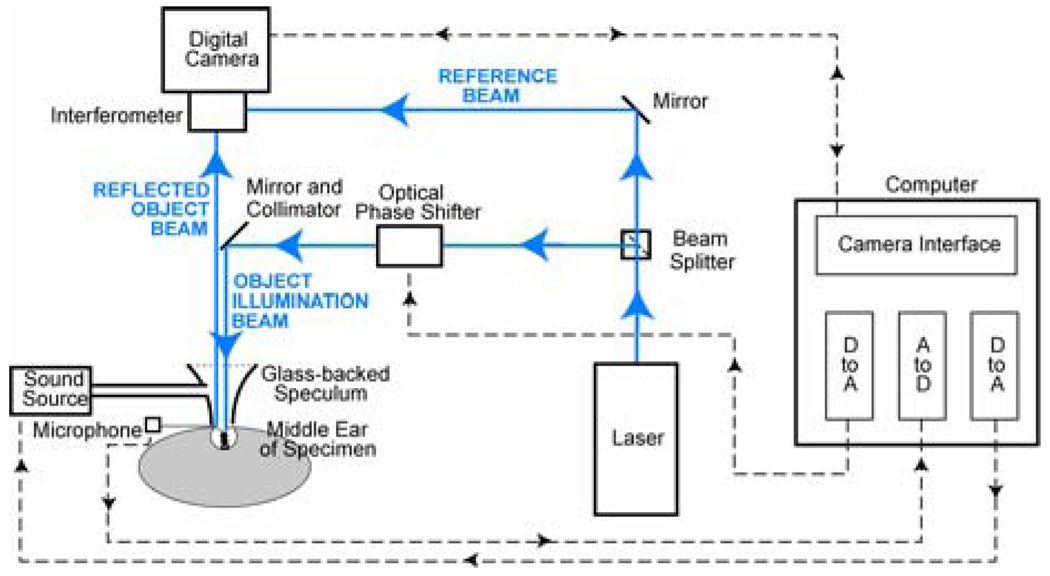Figure 1.
Time-averaged Holography (TAH) via Computer-assisted Opto-Electronic Holography (OEH). Details of the systems design and construction have been published elsewhere (Hernández-Montes et al. in press). The output of a collimated laser source (473 nm, 15 mW) is split into a reference and object beam. One of these beams is also subjected to an optical phase shift of 0, 90, 180 or 270 degrees, via a computer-controlled piezo-electric mirror system that changes the optical path length by an appropriate fraction of the optical wavelength. The object beam is directed to illuminate the surface of the TM. The reflected object beam is combined in the interferometer with the fixed reference beam and a digital camera records the interferogram. The controlling computer also produces an analog signal to drive the sound stimulus and uses an analog-to-digital converter to measure the signal produced by a probe-microphone near the surface of the TM.

